Search Questions
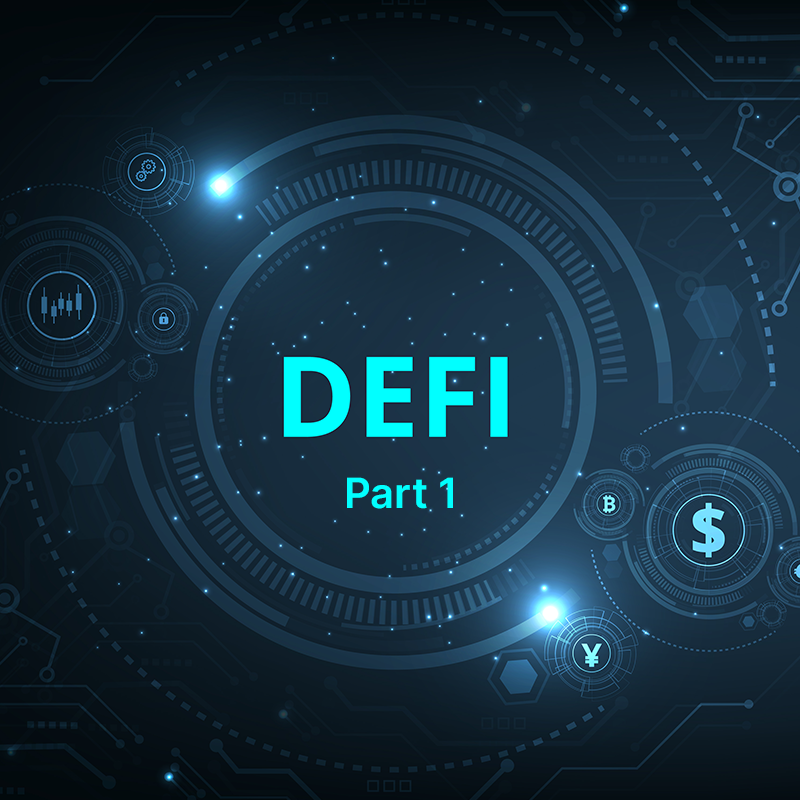
Interesting Takeaways of DeFi Staking
What is DeFi Staking? DeFi staking refers to the locking of Crypto Tokens into a smart contract in exchange to turn a validator for a DeFi protocol and earn additional tokens as a reward. In simple words, it is a practice that enables the user to act as a validator for transactions and receive rewards for the staked assets on the DeFi platform.With the dawn of crypto and Decentralized Finance (DeFi) Development Services, DeFi staking opened the gateway to earn additional profits from crypto assets.What are the Types of DeFi Stakes? Staking Staking involves locking a defined amount of crypto assets to become a block validator in a proof of stake (PoS) Blockchain network. PoS relies on validators to validate the transactions and thus the validators should perform their duties meticulously or else there can be a risk of losing complete stake. In addition, the validators receive staking rewards for creating and validating blocks.Yield FarmingYield Farming is defined as the practice of moving numerous crypto assets to DeFi staking platforms and churn out maximum profit from them. The assets are available on a lending protocol or a liquidity pool to earn a passive income in the form of interest. Also, the users can earn a portion of their revenue generated by the Defi staking platform of their choice.Liquidity Mining Liquidity Mining is termed a subcategory of yield farming that comprises depositing crypto tokens or coins to liquidity pools. These pools play a vital role in Automated Market Maker, where trading is enabled without intermediaries. In general, a liquidity pool has two assets making up a trading pair. Here, the entire system relies on liquidity providers who ensure asset availability at the pools.What are the Benefits of DeFi Staking? DeFi Staking has a wide array of benefits for stakers, staking platforms, and Tokens/Protocols/Blockchain Networks.Benefits of DeFi Staking for Stakers A way to earn passive income Staking with DeFi tokens will help you earn much higher rewards DeFi tokens are protected with highly secure smart contractsBenefits of DeFi Staking for Staking Platforms Increased Liquidity Earn revenue from stakers and networksBenefits of DeFi Staking for Tokens/Protocols/Blockchain Networks DeFi Staking offers to maintain liquidity Energy consumption is low for validating blocks offers dynamic token market capitalizationWrap UpHopefully, the above article has enlightened you on DeFi Staking, Types of DeFi stakes, Proof of Stake, and Benefits of DeFi Staking. In case, you have any doubt feel free to contact us.Are you looking for a DeFi Development Company? Your search ends here, we are the right choice for you! Make a DeFi move with us and schedule a meeting with our experts now.
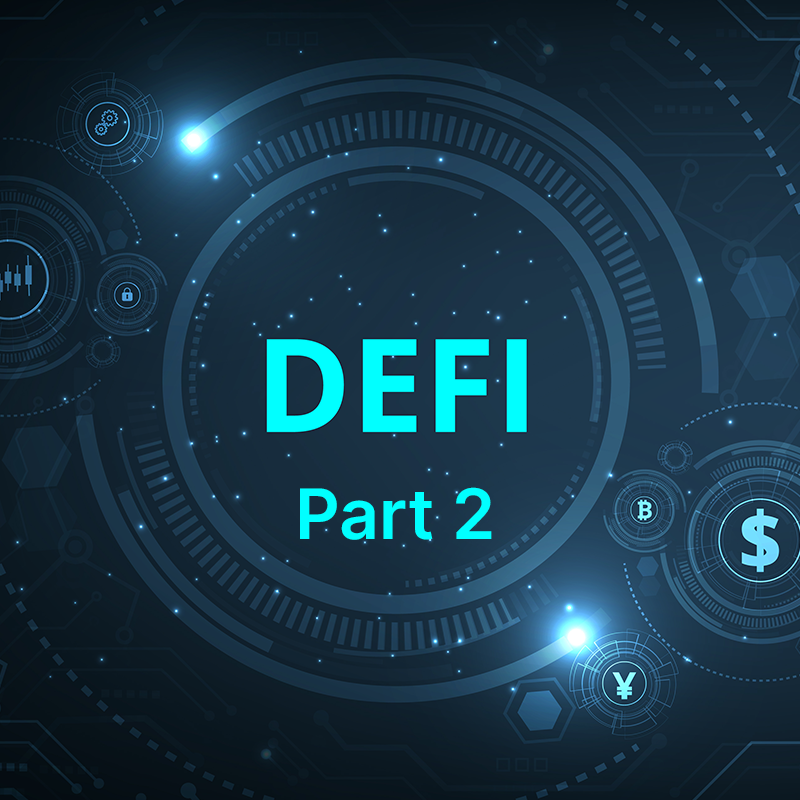
Understanding DeFi Tokens, Defi Wallet, and Defi Exchange
DeFi stands for Decentralized Finance, which utilizes smart contracts instead of traditional financial utilities.What is a DeFi Token?DeFi Tokens are referred to as Ethereum Tokens and they carry a significant market capitalization. They enable users and traders to access financial services in a newly crafted DeFi application. These DeFi tokens enhance major DeFi features like borrowing, lending, investing, staking, trading, and risk management. DeFi Development Services offer Defi Tokens that are divided into three categories:Fee TokensFee tokens are referred to as DeFi tokens that claim a set percentage of fees generated by a specific DeFi protocol. Each DeFi protocol attracts usage fees from the users. A buy and burn mechanism can be used to increase the value of tokens by making them deflationary in nature. Governance TokensGovernance tokens gained momentum with users interested in the growth of the DeFi protocol. The developers of the DeFi protocol can propose the edits and governance tokens can be used by the community members to vote on these proposals. A few times the functionalities of fee tokens and governance tokens are combined into a single token. Collateral TokensCollateral Tokens are defined as DeFi tokens whose price is pegged to the price DeFi protocol is trying to hold. These tokens are crucial for protocols creating synthetic assets.What is a Defi Wallet? A DeFi Wallet depicts a non-custodial wallet that stores cryptocurrency assets. In other words, the custodial wallet means users with seed phrase or private key are given access to your funds. A DeFi wallet is flexible delivering access to a wide array of applications. These wallets enable the complete control of funds by the owner eliminating the third-party interruption. A few popular DeFi Wallets are: Gnosis MetaMask MyCryptoWhat is DeFi Exchange? DeFi Exchange depicts a DeFi platform or an application, which can be used to lend or borrow funds from others, avail insurance against risks, trade cryptos, and earn rewards. These platforms generally do not offer custodial wallets. These platforms enable users to connect through a web3-enabled browser extension or non-custodial wallet like MetaMask. Once the wallet is integrated with the platform with the wallet, cryptos can be exchanged on the DeFi exchange. Popular DeFi Exchanges: Uniswap SushiSwap KyberWrap Up DeFi tokens, DeFi Wallet, and DeFi Exchange fall under the umbrella of DeFi Development. Are you looking for a reliable DeFi Development Company? Scroll yourself to our services and schedule a meeting right away!If you have any queries, feel free to connect with our experts!
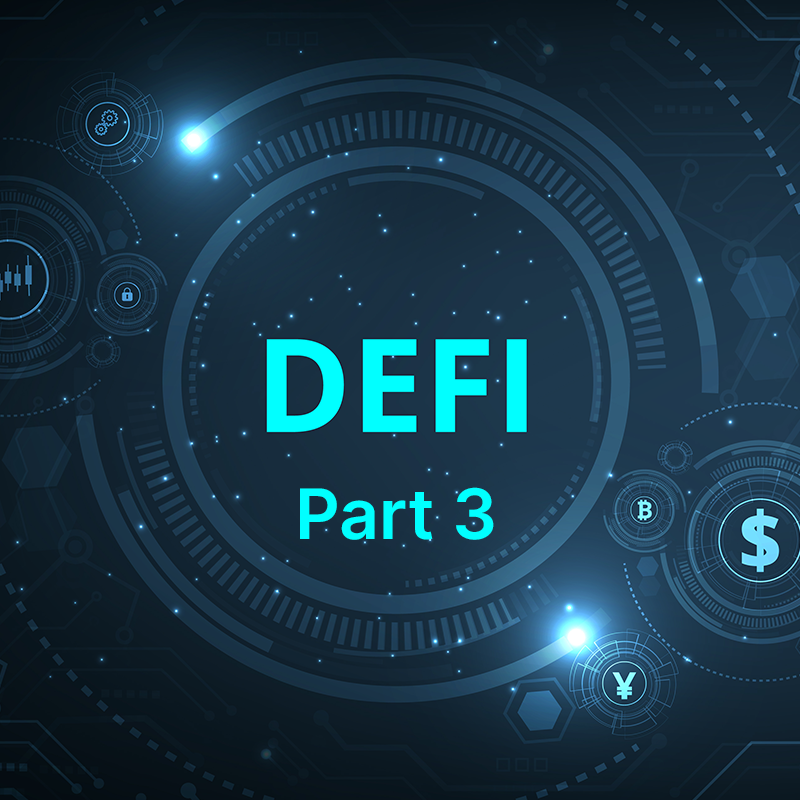
A Deep Dive into DeFi Lending and Borrowing
Decentralized Finance (DeFi) Development Services are gaining momentum with the rising population going digital. DeFi has a wide array of applications in the finance sector, out of which we will dive deep into DeFi Lending and Borrowing. What is DeFi Lending / DeFi Borrowing? DeFi protocols enable users to act as lenders or borrowers in a completely decentralized fashion ensuring the individuals have control of their funds. Decentralized Finance is backed by smart contracts that serve as a digital intermediary between lenders and borrowers. DeFi Lending refers to crypto holders or lenders supplying their tokens or coins into the money market to lend funds to the users and earn passive income or interest on these assets. It is similar to traditional banking with a thin line of difference that DeFi lending operates peer-to-peer eliminating the third parties. DeFi Borrowing refers to users taking a loan from the crypto holders on a decentralized platform through P2P lending. The borrowers offer an asset that can be summed equivalent to the loan amount to borrow the funds from the lender. What is Asset Collateralization in DeFi?Asset Collateralization is termed as a fundamental concept in DeFi, where the borrower pledges an asset for the lender to recover their capital if the borrower defaults on the loan. When a user borrows some assets from the liquidity pool, the user needs to provide the pool with some collateral. In case, the user fails to repay the debt to the pool, the lending protocol doesn’t repay the collateral to the borrower but instead uses the assets to repay the debt to the pool. What is Asset Overcollateralization in DeFi? The borrower on the DeFi platform must deposit a crypto asset that records a higher percentage value that the value of assets borrowed. It is beneficial to leverage asset overcollateralized loans for borrowers only if the end investment raises in value speedier than the interest on the debt. In case, the value of the collateralized asset falls below the total debt price, the borrower may not repay the loan causing it to become insolvent. How Does DeFi Lending / Borrowing Work? DeFi Lending enables anyone to be a lender. A user holding Crypto assets on DeFi can lend the assets to others and earn interests on that loan. The lending process is carried out by the lending pools, where the users can pool their assets and distribute them to borrowers using smart contracts. Since a wide array of ways are available to distribute the interest to investors, the lenders need to research and identify their type. Also, the borrowers need to research lending pools as they have different approaches to borrowing. The borrower needs to deposit collateral via Smart Contract on the DeFi Lending platform that matches the value of the loan amount before borrowing the asset. The collaterals might vary from cryptocurrencies to tokens. There might be a possibility that the value of collaterals to drop down below the debt value. In this case, this will lead to a liquidation penalty. Wrap UpHopefully, the above article has enlightened you on DeFi Lending / Borrowing. If you have queries, feel free to connect with our experts. Are you looking for a reliable DeFi Development Company? If yes, you have landed at the right place! Scroll your cursor to our DeFi Development Services and let’s discuss taking your project ahead.
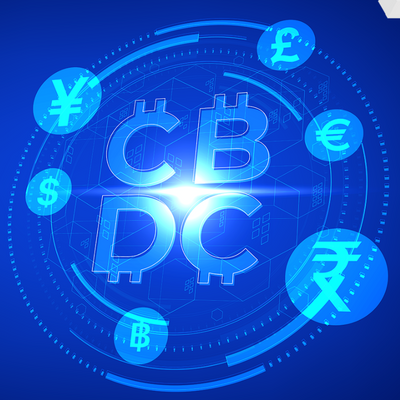
CBDC- A New Revolution into the FinTech!
Blockchain Development is leading the edge over the tech trends and transforming the way business is done. Majorly, Blockchain Technology has revolutionized the traditional financial ecosystem with Defi Development by introducing a decentralized version of fund transfer.Now, a new trend in the Blockchain space has captured the attention of the fintech and that is CBDC- Central Bank Digital Currency. A Deep Dive into Central Bank Digital Currency (CBDC)Central Bank Digital Currencies (CBDC) are termed digital tokens, just like the cryptocurrencies that are issued by a central bank or a nation’s monetary authority. These currencies are assigned the value of the specified country’s fiat currency. In other words, it is defined as the digital form of the country’s fiats. Countries across the world are developing CBDCs and many of them have already implemented them. With countries transitioning to a digital age, understanding CBDC becomes crucial to explore its effects on economies, existing financial networks, and stability. Let’s go into detail to explore more.Discover the Types of CBDCs for a Detailed Outlook! There are two types of Central Bank Digital Currencies (CBDCs), which are wholesale and retail. Let’s explore more about them. Wholesale CBDCsWholesale CBDC is much like financial institutions that hold reserve deposits with a central bank. It enhances the payments and security settlement efficiency, also eliminating liquidity risks. These CBDCs are mostly used in an interbank system to check the effects of cross-border payments.Retail CBDCsRetail CBDCs refer to government-backed digital currencies which are used by businesses and consumers. These CBDCs generally eliminate the intermediary risks associated with the bankrupting of private digital currency issuers and losing of customer assets. Check Out Why CBDCs are Gaining Momentum! A CBDC eliminates all the third-party risks associated with the system like bank failures, liquidity risks, etc. It lowers the cost of cross-border transactions by reducing complex distribution systems and raising the jurisdiction cooperation between the governments. CBDCs can directly establish the connection between central banks and consumers, thus removing the need for expensive infrastructure. The dollar being one of the most preferred currencies across the world, a U.S. CBDC supports and preserves its dominant position. Cryptocurrencies being highly volatile, CBDCs provide businesses and consumers with stable means of exchanging digital currency. CBDCs Vs Cryptocurrencies- Are They Similar? RWaltz- Pioneers in Blockchain Development Services RWaltz is a leading Blockchain Development Company with a wide range of services like cryptocurrency development, token development, NFT Marketplace Development, Coin Listing, Launchpad Development, Crypto Exchange Development, DeFi Development, DApp Development, Smart Contract Development, Smart Contract Audit, and much more. Clients across business verticals trust us for our service excellence. If you are looking for a Blockchain Development Company, connect with us! Schedule a demo now! Wrap UpHopefully, the above article has enlightened your knowledge of CBDC. The future is near when these digital currencies will revolutionize the fintech sector with their storming use cases.
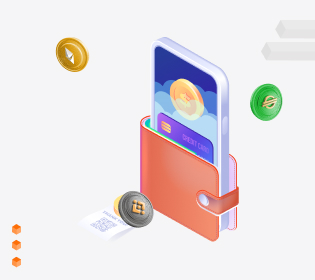
What are the benefits of Crypto Staking?
Crypto staking has become an increasingly popular way for cryptocurrency holders to earn passive income on their digital assets. Staking allows you to earn rewards on coins you already own by helping validate transactions on proof-of-stake blockchains. Here are some of the main benefits of crypto staking: Earn Passive IncomeOne of the biggest advantages of staking is that it allows you to earn passive income on coins you would otherwise just be holding in your wallet. Staking rewards are typically paid out on a regular basis, so it provides a steady stream of income that requires very little effort on your part once you have set up your staking wallet. The actual yield varies based on factors like the specific coin being staked, the amount staked, and the staking pool, but APY yields of 5-15% are common. This provides a great way to grow your crypto holdings over time.Support Network SecurityStaking helps secure proof-of-stake networks like DeFi platforms by having token holders lock up their coins to validate transactions. The more decentralized the network of validators, the more secure the network. By staking your coins, you help ensure the network remains decentralized and secure against attacks. Your staking contributes to the overall health and security of the blockchain network and DeFi ecosystem. Retain Ownership of Assets With staking, you retain full ownership of your coins. This differs from lending platforms where you relinquish control of your crypto to the lending platform. With staking, your crypto assets remain in your possession the entire time, giving you peace of mind. You maintain full control of your private keys as well.Easy to Get StartedStaking has become very easy for everyday crypto users to get started with. Many cryptocurrency wallets and exchanges now offer built-in staking services that allow you to stake DeFi tokens with just a few clicks. All you need is to hold the stakable coins in a compatible wallet or on a supported exchange to begin earning rewards. Some platforms even offer “staking pools” that allow you to stake with other users to meet the minimum staking amounts of certain DeFi networks.Hedge Against VolatilityStaking provides a way to earn on your crypto even during periods of price volatility. So even if the market enters a downturn, you can still generate yields on your staked assets. This helps hedge against market swings and continue growing your portfolio. The rewards earned from staking provide a buffer against declining asset values.Compounding RewardsMost staking rewards are paid out on a regular basis, like daily or weekly. This allows you to compound your earnings by staking the earned rewards. As the rewards accumulate over time, they can be re-staked, earning you even greater rewards through the power of compounding. Your staking balance steadily grows allowing for exponentially higher earnings over long time horizons.Support Blockchain GrowthBy providing validators and helping secure blockchain networks, staking directly contributes to the growth and adoption of blockchain technology and DeFi. It incentivizes more users to participate in consensus building. Your staked coins allow more nodes to join and enhance the capabilities of the DeFi ecosystem. Staking gives you a way to support the growth of decentralization.Environmentally FriendlyUnlike crypto mining, staking does not require massive computing power which consumes enormous amounts of electricity. It has a negligible environmental footprint in comparison to energy-intensive mining operations. This makes earning yields through staking much more environmentally sustainable. Especially as concerns around climate change and carbon footprints escalate, staking provides a green way to earn from crypto.Access to New CoinsMany new crypto projects like DeFi tokens distribute a portion of their tokens to stakers on their network. By staking on up-and-coming networks early on, you gain access to new token rewards before the projects gain mainstream adoption. These new tokens can appreciate tremendously if the project succeeds, providing substantial upside for early stakers. This gives stakers access to promising new assets.Hold Long Term StrategiesThe rewards from staking incentivize holders to adopt longer-term holding strategies. To maximize yields, long holding periods are required. This helps stabilize and support the long-term prospects of digital assets as investors lock up their DeFi token stakes. Cryptocurrency gains more legitimacy as an asset class as stakers hold onto their investments for lengthy periods rather than short-term trading.Avoid Trading Fees Day trading can often result in substantial fees that eat into profits. Staking allows you to earn yields on coins without constantly buying and selling them. This avoids significant trading fees like exchange fees, spreads, and withdrawal/deposit charges. Your assets can appreciate just from staking rather than actively trading them while incurring transaction costs.In summary, crypto staking provides a simple way to put your digital assets to work generating rewards. The passive income, support of blockchain and DeFi networks, environmental benefits, access to new assets, and holding incentives make staking an appealing option for any cryptocurrency investor. As staking protocols and options continue advancing in the coming years, crypto staking will likely play an increasingly pivotal role in the digital asset ecosystem. The benefits make staking a compelling tool for anyone aiming to maximize their holdings over the long term and support the growth of blockchain technology and decentralized finance.DYOR:Before getting started with crypto staking, it is important to do your own research (DYOR) to determine which projects and staking options make the most sense for your investment goals and risk tolerance. Make sure to evaluate factors like staking minimums, lock-up periods, supported wallets, and potential yields. Research the long-term viability and adoption potential of any network you plan to stake on. As with any investment, staking does carry risks like price volatility and locking up assets. So do your homework to find the staking opportunities that best fit your overall crypto investment strategy. The rewards can be well worth the effort for those who carefully research their options and wisely manage their staked assets over time.Are you looking for cutting-edge DeFi application development? Look no further! Reach out to RWaltz for expert solutions tailored to your needs. Get started with a FREE consultation for your project today. Let's build the future of decentralized finance together. Contact us now!
Recent Knowledge Base
Let's Build Your Vision Together
Get Started with RWaltz Today!




